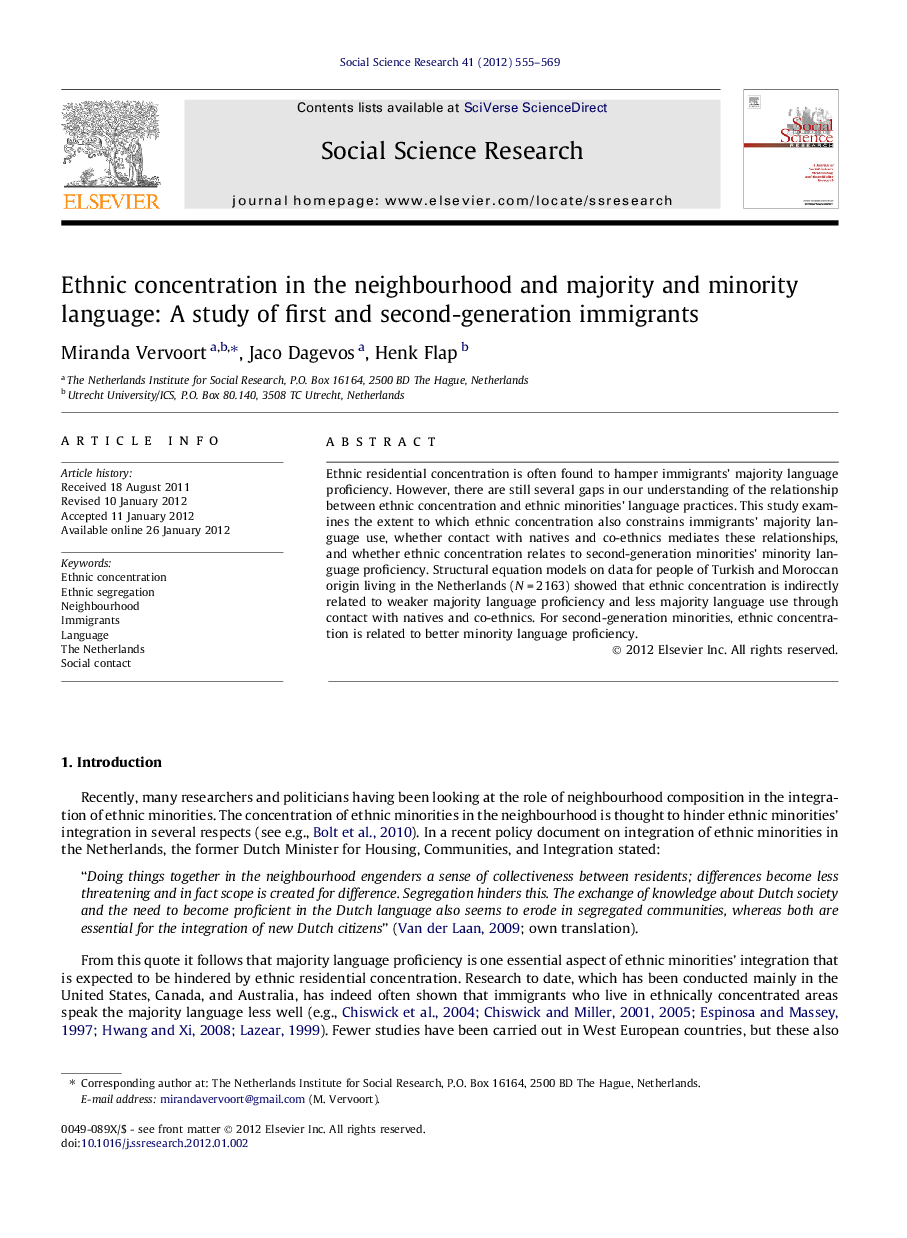| کد مقاله | کد نشریه | سال انتشار | مقاله انگلیسی | نسخه تمام متن |
|---|---|---|---|---|
| 956008 | 928304 | 2012 | 15 صفحه PDF | دانلود رایگان |

Ethnic residential concentration is often found to hamper immigrants’ majority language proficiency. However, there are still several gaps in our understanding of the relationship between ethnic concentration and ethnic minorities’ language practices. This study examines the extent to which ethnic concentration also constrains immigrants’ majority language use, whether contact with natives and co-ethnics mediates these relationships, and whether ethnic concentration relates to second-generation minorities’ minority language proficiency. Structural equation models on data for people of Turkish and Moroccan origin living in the Netherlands (N = 2163) showed that ethnic concentration is indirectly related to weaker majority language proficiency and less majority language use through contact with natives and co-ethnics. For second-generation minorities, ethnic concentration is related to better minority language proficiency.
► Structural equation models on data for Turks and Moroccans in the Netherlands.
► Ethnic concentration is indirectly related to weaker majority language proficiency.
► Ethnic concentration is indirectly related to weaker majority language use.
► Ethnic concentration is related to better minority language proficiency.
► Contact with natives and co-ethnics mediate these relationships.
Journal: Social Science Research - Volume 41, Issue 3, May 2012, Pages 555–569